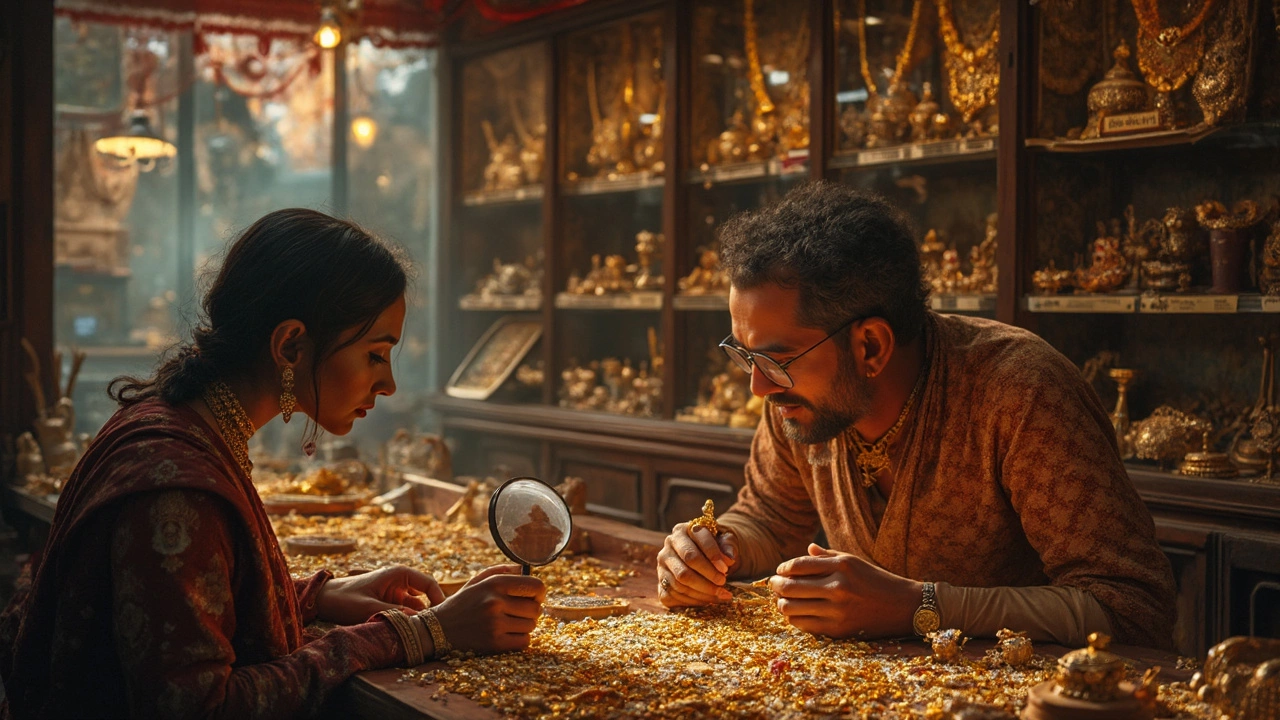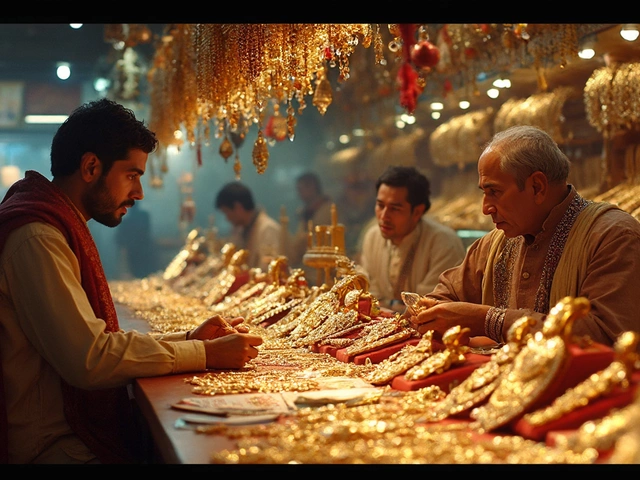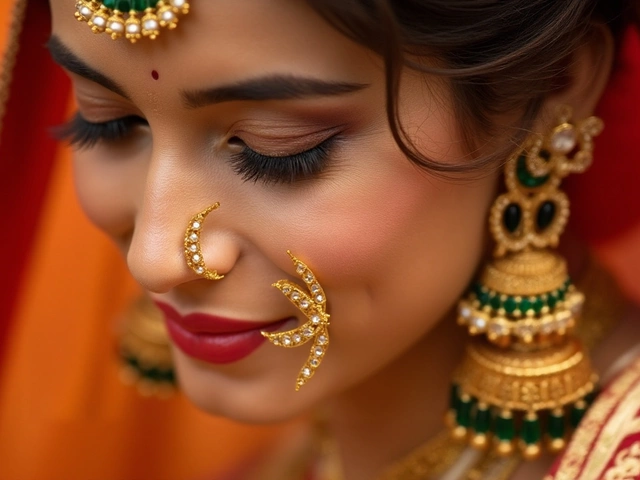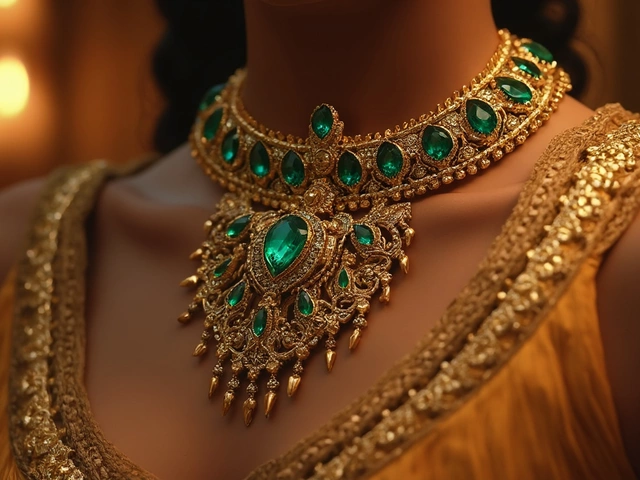So you’re wondering if grandma’s old ring could help fund a summer vacation—or if that flea market brooch is worth more than your monthly phone bill? Let’s talk about spotting antique and vintage jewelry that’s not just pretty or old, but actually likely to go up in value over the years.
First thing: age alone doesn’t mean jackpot. Some jewelry from the ‘80s just looks dated, while a brooch from the 1920s Art Deco craze can have collectors practically drooling over it. Value comes from a mix of age, design, maker, and condition—not just how many birthdays the piece has seen.
Now, if you’ve got a piece in hand, flip it over. Anti-fake clue number one: craftsmanship. Jewelry that’s still sturdy, with tight settings and intricate details, was made when people were paid to obsess over every millimeter. Modern fakes are usually lighter, looser, and kind of flimsy if you really poke around.
There’s a world of difference between “old” and “antique,” especially if you’re hoping to leave a killer heirloom for your kids, like I wish my dad had for me (still waiting, Dad). If a piece stands out in design, comes from a celebrated jeweler, or uses rare materials, you could be holding something that goes up in value every year—especially as trends circle back or supply gets tighter.
- What Makes Jewelry Antique or Vintage?
- Clues to Spot Real Value
- Materials and Marks to Look For
- How to Buy and Care for Growing Value
What Makes Jewelry Antique or Vintage?
If you’ve ever heard someone call their mom’s bracelet “antique” just because it looks old, here’s the real scoop. In the jewelry world, there are actual cutoffs. To be labeled antique, a piece needs to be at least 100 years old. So, as of now in 2025, anything made before 1925 hits that mark. Anything 20 to 99 years old is considered vintage, so think 1926 to about 2005. That old heart-shaped locket from Y2K? It just squeaks in as vintage, not antique.
The age isn’t just a badge—why does it matter? First, older pieces often used techniques and materials that you just can’t find or afford today. Edwardian, Victorian, and Art Deco pieces—especially made by known makers—tend to hold or increase in value because collectors and designers love their uniqueness. On the other hand, mass-produced stuff from the late '90s or early 2000s almost never gets attention from collectors, no matter how cool you thought that choker looked in high school photos.
Another easy tip: true antique jewelry is rarely stamped with modern hallmarks or logos. Vintage might have early versions of branding, but usually, anything with laser engraving, a barcode, or "Made in China" is more mall than museum. Flip open the clasp and peek at the inside—no marks at all sometimes means legit old. Weirdly, too many marks can mean it’s just a newer copy trying to fake you out.
The most antique jewelry out there often tells a story from a specific era—the swirling gold of the Victorian age, the geometric pops of Art Deco, or even the nature-inspired lines from the mid-century. Learning a bit about what each era looked like helps tons. Compare pieces to online reference guides or even museum websites; you’ll catch more fakes, and maybe even land a hidden gem.
Clues to Spot Real Value
If you want to know if you’ve stumbled across the real deal, it’s all about the details. A piece might look fancy on the outside, but what’s going on under the hood? Trust me, I learned the hard way: never get too excited by just a shiny surface. Here are the main clues to figure out if you’ve got valuable antique or vintage jewelry in your hands.
- Check for hallmarks and maker’s marks: Genuine older jewelry usually has tiny markings stamped on the clasp or inside the band—these can tell you who made it, what metal it is, and sometimes even give away its age. Look for names like Cartier, Tiffany, or famous British assay marks. But don’t squint and guess—use a jeweler’s loupe or your phone’s macro camera.
- See how it’s made: Before laser cutting and machines took over, every piece was assembled by hand or with basic tools. If you see solder marks, prong settings that are a little uneven, or super-detailed carving, it’s likely older and real. Fake patina or mass-produced copies don’t have the same quirks or heft.
- Feel the weight: Old gold, platinum, and silver pieces are usually heavier. Jewelers didn't cut corners on materials—they packed in the real stuff. A light, tinny feel often means it’s a cheap modern copy.
- Gemstone quality matters: Antique jewelry often used old-cut diamonds, sapphires, rubies, and emeralds. These stones look different from today’s laser-perfect cuts—they might have smaller facets, be slightly irregular, or shine differently in the light. That’s a good thing; it can make a piece stand out to collectors.
- Historical design cues: If you spot motifs from certain eras—like filigree and floral from the Edwardian period, bold geometric lines from Art Deco, or enamel from the Victorian era—you’ve got another clue. But make sure the style matches the age of the piece. A ‘Victorian’ necklace made in the early 2000s isn’t going to fool anyone in the know.
Everybody loves a bargain, but genuine pieces rarely escape notice. If the deal seems too good, double-check; scammers are everywhere. I once saw someone almost pay a bomb for a “Georgian” ring that was basically fresh out of a Jaipur factory. Authentic antique jewelry holds clues you can actually see and feel, if you know what to look for. If you’re not sure, don’t wing it—ask a trustworthy jeweler for a quick check. When real value is hidden in plain sight, it pays to be picky.
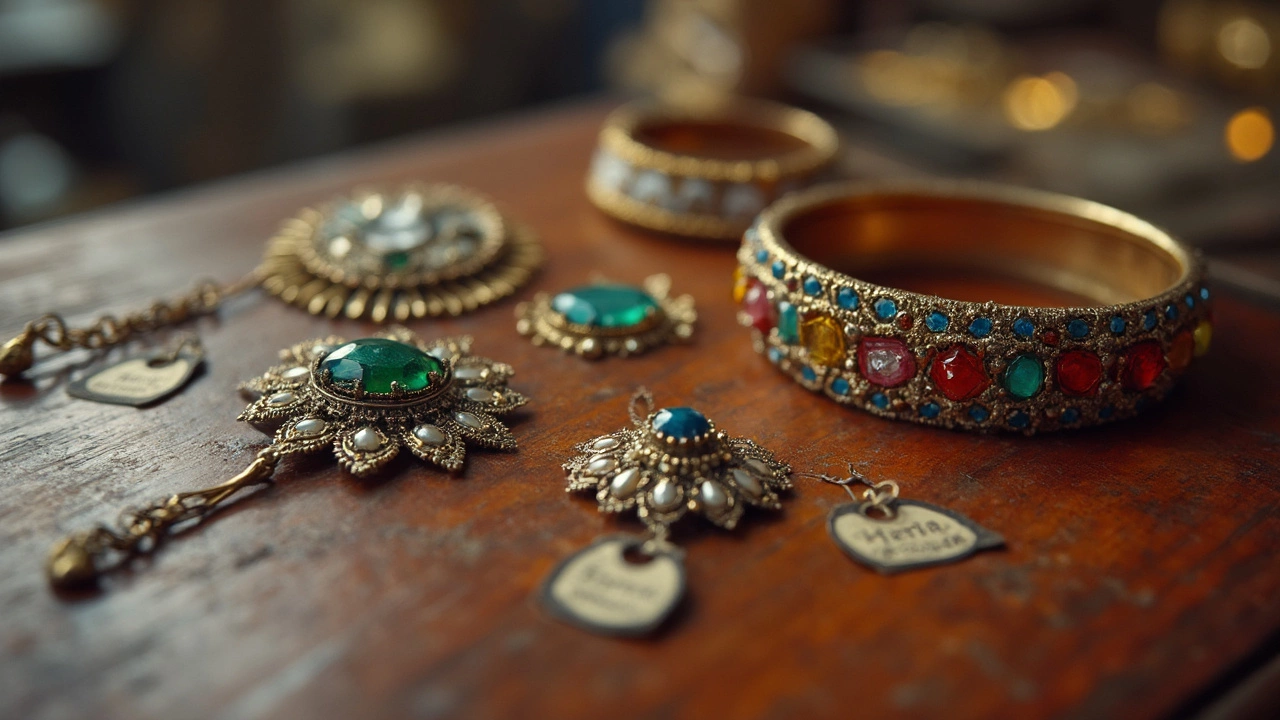
Materials and Marks to Look For
When it comes to figuring out whether a piece of jewelry is genuinely valuable or just old, materials and hallmarks are your best friends. Let’s break down what to keep your eyes peeled for when hunting for antique jewelry that could actually make you money someday—or at least give you bragging rights in the family group chat.
Start with materials. The big hitters are gold (usually 14K or 18K in old pieces), platinum, and sometimes high-silver content sterling. Platinum, for example, was super popular during the early 1900s, especially in Edwardian and Art Deco designs—spot this in a ring and you might just have something special. Yellow gold dominated the Victorian era, and rose gold had a moment in the late 1800s. If something looks like gold but is super light or doesn’t have a single mark, be wary. Solid metals almost always have a stamp with a karat or purity number, so snoop for tiny numbers like “750” (for 18K gold) or “925” (for sterling silver).
The type and quality of stones is a deal-breaker for value. Old diamonds usually have different cuts—look out for “old mine,” “rose,” or “European” cuts. These aren’t as sparkly as modern stones but are more sought after by vintage fans and some collectors. Natural pearls, especially if they aren’t perfectly round, can make a simple necklace way more valuable. Synthetic or glass stones? Not so much, unless the piece is made by a famous designer.
Now, onto marks, because this is where many people strike out. Real value often starts with a hallmark. These tiny stamps tell you the maker, metal, origin, and sometimes the exact year. British antique jewelry is famous for super-detailed markings—you might see a lion for sterling silver, a crown for gold, and a letter for the year. French items often show a tiny eagle’s head if it’s gold. American jewelry usually shows “14K,” “18K,” or a maker’s mark—Tiffany, Cartier, even an old “Co.”
Here’s a table of some common hallmarks you’ll spot on older pieces that are worth your attention:
| Mark | Meaning | What to Check |
|---|---|---|
| 14K / 18K / 22K | Gold purity (karat) | Look for clarity and sharpness in stamp |
| PLAT / PT / 950 | Platinum content | Old settings, especially Art Deco rings |
| 925 / Sterling | Silver (92.5%) | Older British/American pieces |
| Lion Passant | Sterling silver (England) | Should be on hallmark panel |
| Maker’s Mark | Jeweler/brand signature | Look for Tiffany, Cartier, Van Cleef etc. |
If you can barely read the hallmark, don’t panic. Years of wear can rub these down, and that “faded stamp” look is actually a good sign the piece has some age on it. But be careful—no mark at all, especially on a supposedly valuable metal, is usually not a good sign unless it’s super old (pre-1850s British, for example).
Lab tests like acid tests for gold or handheld XRF machines exist, but most folks won't have these lying at home. So, get cozy with a magnifying glass or the zoom on your phone—you might be surprised what you spot. And don’t forget, some fake marks are out there. If that 18K stamp looks sloppy or off-center, double-check before you start dreaming about cashing in.
How to Buy and Care for Growing Value
Buying antique jewelry that actually gets more valuable takes some homework—and a bit of street smarts. You want to buy from sources you can trust. Jewellers with a solid reputation, major auction houses, and established antique dealers usually know what they’re talking about. Websites or social media sellers without clear reviews? That’s always a gamble.
When you’re thinking about buying, ask about provenance—that’s a fancy way of saying 'where did this piece come from?' A ring with paperwork or even an old family story stands a better chance of being authentic and valuable. Always check for documentation, receipts, or old appraisals if you can get them.
- Look for hallmarks and maker’s marks on the jewelry. They can prove origin and gold content, making the piece easier to value and insure later on.
- Ask if stones have been replaced. Original stones keep value better than substitutes, even if the old ones aren’t perfect.
- Find out if the jewelry has been heavily repaired. Too much fixing can hurt value because collectors want pieces as close to original as possible.
Insurance is a smart move, especially once you get into pieces worth a lakh or more. Most home insurance won’t cover valuable jewelry unless you add it to your policy. Get a proper appraisal from a certified gemologist, and keep that document handy for both insurance and future selling.
Once you own a piece, how you care for it can make or break its resale value. Avoid wearing old jewelry to bed, in the shower, or while cooking. Chemicals, heat, and physical knocks can do real damage. Pieces from before the 1950s are especially picky—many were made with softer gold or delicate settings that need gentle handling.
Store jewelry separately so nothing gets scratched or tangled. Soft-lined boxes with separate compartments are ideal. If you must clean, avoid the DIY baking soda trick you see online. Instead, go to a pro cleaner, especially if the piece has enamel, pearls, or fragile stones.
| Do | Don't |
|---|---|
| Store in separate, soft-lined boxes | Leave in open trays or plastic bags |
| Get periodic professional cleanings | Use harsh chemicals or toothpaste |
| Insure appraised pieces | Assume all home insurance covers jewelry |
| Document purchases and provenance | Rely on memory for important details |
If you’re letting your kids—like my overly curious Kabir—try on your special old ring, keep a close eye. One game of hide-and-seek and you’ll be searching through sofa cushions for hours. Treat your potential treasures with the same care as a favorite family story—it keeps both their beauty and their value growing for years.
